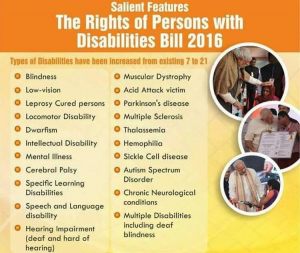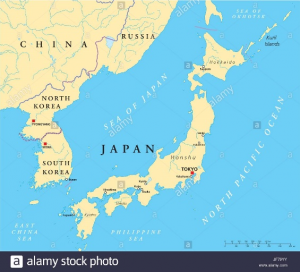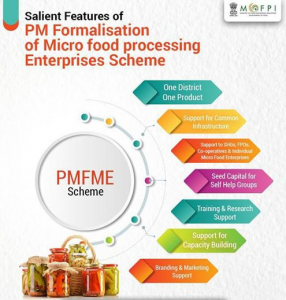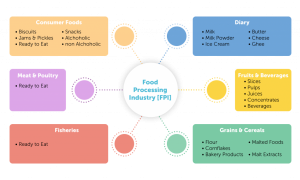Topics
- Reservation | Persons with Disability
- India – Japan relations
- Pradhan Mantri Formalisation of Micro food processing Enterprises (PMFME) Scheme
- Niti Aayog | Health Care
- Glacial Lake Atlas
- Reservation | Persons with Disability
#GS2 #Government Policies # Welfare scheme #Judicial Activism
Context: The Supreme Court of India has recently held that persons with physical disabilities have the right to reservation in promotions also.
- A 2-judge bench comprising Justices Sanjay Kishan Kaul and R Subhash Reddy held so dismissing an appeal filed by the State of Kerala against a judgment of the Kerala High Court (State of Kerala vs Leesamma Joseph).
- A disabled particular person can avail the advantage of reservation for promotion even when she or he developed the incapacity after gaining employment.
- Further, the Supreme Court directed the Kerala Government to implement reservation in promotion for disabled within 3 months.
Background:
About the Case, State of Kerala vs Leesamma Joseph
- The case was based on a claim under the Persons with Disabilities (Equal Opportunities, Protection of Rights and Full Participation) Act, 1995.
- This Act has been replaced with the Rights of Persons with Disabilities Act 2016.
- The Kerala Administrative Tribunal rejected the plea of applicant Leesamma Joseph stating that the rule of Recruitment in the State of Kerala, General Rules and other orders issued by the Government under Section 32 of the 1995 Act did not provide for any reservation in promotions.
- The Kerala High Court set aside the decision of the Kerala Administrative Tribunal following Siddaraju vs. State of Karnataka case. Which held that the rule of no reservation in promotions as laid down in Indra Sawhney case has no application to Persons with Disability (PWD)
Key takeaways from the Supreme Court judgment
- While approving the High Court judgment, the Supreme Court held:
- The 1995 Act recognizes right to reservation in promotion.
- Identification of posts for reservation as per Section 32 of the 1995 Act is a prerequisite for appointment; but appointment cannot be frustrated by refusing to identify posts.
- The absence of provision for reservation in the recruitment rules will not defeat the right of a PwD as such right flows from the legislation.
- Reservation to promotion can be given to a PwD even if the person was not originally appointed in PwD quota.
- Further, the responsibility to provide equal opportunities to disabled persons does not end with giving them reservation at the time of recruitment.
- Legislative mandate provides for equal opportunity for career progression, including promotion.
- Thus, it would be negation of the legislative mandate if promotion is denied to PwD and such reservation is confined to the initial stage of induction in service.
- This would in fact result in stagnation of the disabled in a consequential frustration.
Right of Persons with Disabilities Act 2016:
- The Act replaces the Persons with Disabilities (Equal Opportunities, Protection of Rights and Full Participation) Act, 1995.
- It fulfills the obligations to the United National Convention on the Rights of Persons with Disabilities (UNCRPD), to which India is a signatory.
- According to the The Rights of Persons with Disabilities (RPwD) Act, 2016, enacted on 28.12.2016 and came into force from 19.04.2017, Disability has been defined based on an evolving and dynamic concept.
- The types of disabilities have been increased from 7 to 21.
- In addition, the Government has been authorized to notify any other category of specified disability.
- Broad based Central & State Advisory Boards on Disability are to be set up to serve as apex policy making bodies at the Central and State level.
- The Act provides for grant of guardianship by District Court under which there will be joint decision – making between the guardian and the persons with disabilities.
- It increases the quantum of reservation for people suffering from disabilities from 3% to 4% in government jobs and from 3% to 5% in higher education institutes.
- Every child with benchmark disability between the age group of 6 and 18 years shall have the right to free education.
- Persons with “benchmark disabilities” are defined as those certified to have at least 40 per cent of the disabilities specified above.
- Government funded educational institutions as well as the government recognized institutions will have to provide inclusive education.
- Stress has been given to ensure accessibility in public buildings in a prescribed time frame along with the Accessible India Campaign.
- A separate National and State Fund will be created to provide financial support to the persons with disabilities.
- The Act provides for penalties for offences committed against persons with disabilities and also violation of the provisions of the new law.

- India – Japan relations
#GS2 #Bilateral Relations #Soft Diplomacy
Context: Recently, Prime Minister Narendra Modi inaugurated ‘Zen Garden and Kaizen Academy’ at Ahmedabad Management Association (AMA) at Ahmedabad via video conferencing.
Key Details:
- It is a joint endeavour of the Japan Information and Study Centre at the AMA and the Indo-Japan Friendship Association (IJFA), Gujarat. It is supported by the Hyogo International Association (HIA) Japan.
- It has traditional Japanese elements such as Red Bridge Guzei, Shoji Interior, Glory of Tori, a 3D art mural, fusion Chabutaro, Taki waterfall, Tsukubai basin and Kimono scroll.
- The opening of the garden and academy is a symbol of spontaneity and modernity of relations between India and Japan.
- It will propagate Japan’s work culture in India and increase business interactions between Japan and India.
(Zen is a Japanese school of Mahayana Buddhism emphasizing the value of meditation and intuition rather than ritual worship or study of scriptures. Zen in Japan is meditation in India).
(Kaizen translates to ‘change for the better’ or ‘continuous improvement’. Kaizen is a Japanese business philosophy that focuses on gradually improving productivity by involving all employees and by making the work environment more efficient).
India -Japan Relationship:
- The friendship between India and Japan has a long history rooted in spiritual affinity and strong cultural and civilizational ties since 752 AD.
- The Japan-India Association was set up in 1903, and is today the oldest international friendship body in Japan.
- Bilateral ties have been singularly free of any kind of dispute – ideological, cultural or territorial.
- Post the Second World War, India did not attend the San Francisco Conference, but decided to conclude a separate peace treaty with Japan in 1952 after its sovereignty was fully restored.
- Today, India is the largest democracy in Asia and Japan the most prosperous.
Political and economic relations:
- A transformational development in the economic history of India was Suzuki Motor Corporation’s path breaking investment in India in the early 1980s that revolutionized the automobile sector, bringing in advanced technology and management ethics to India.
- A test of the reliability of Japan as a friend was witnessed in 1991, when Japan was among the few countries that unconditionally bailed India out of the balance of payment crisis.
- During Prime Minister Mori’s path-breaking visit to India in 2000, the Japan-India Global Partnership in the 21st century was launched.
- The Joint Statement signed by Prime Ministers Manmohan Singh and Shinzo Abe in 2006, factored in the new challenges, and the relationship was upgraded to a Global and Strategic Partnership with the provision of annual Prime Ministerial Summits.
- The India-Japan Comprehensive Economic Partnership Agreement (CEPA) that came into force in August 2011 covers trade in goods, services, movement of natural persons, investments, Intellectual Property Rights, custom procedures and other trade related issues.
- In 2014, the two sides upgraded the relationship to a ‘Special Strategic and Global Partnership’.
- Both sides also agreed to establish the ‘India-Japan Investment Promotion Partnership’. PM Abe pledged to realize public and private investments worth JPY 3.5 trillion and doubling of the number of Japanese companies in India over the next five years.
- During the Prime Minister Narendra Modi visit to Japan in 2018, a ministerial level 2+2 Dialogue mechanism was also announced. Similarly, there are dialogue mechanisms in diverse fields such as economy, commercial, financial services, health, road transport, shipping, education etc. to name a few sectors Political Relations
Recent Developments Between India and Japan:
- Recently, India, Japan and Australia have formally launched the Supply Chain Resilience Initiative (SCRI) in a move to counter China’s dominance of the supply chain in the Indo-Pacific region.
- Japan has finalised loans and a grant totalling around 233 billion yen for several key infrastructure projects in India, including for a project in the Andaman and Nicobar islands.
- In 2020, India and Japan signed a logistics agreement that will allow armed forces of both sides to coordinate closely in services and supplies. The agreement is known as the Acquisition and Cross-Servicing Agreement (ACSA).
- India and Japan defence forces organize a series of bilateral exercises namely, JIMEX (naval), SHINYUU Maitri (Air Force), and Dharma Guardian (Army). Both countries also participate in Malabar exercise (Naval Exercise) with the USA.
Way Ahead:
- Apart from taking assistance from Japan, India should also think about how Indian components could reach Japan, and how they can be rewarded dividends in Japan: the notion of the Aatmanirbhar Bharat also needs to be promoted.
- India needs to look into the matter of post covid ties, ensure good relations with the other parts of the world so as to emerge from the losses
- Japan is very important in order to restrain Chinese influence in the areas of maritime concerning India.
- India can take help of Japan in the matter of permanent membership of the UN Security Council.

- Pradhan Mantri Formalisation of Micro food processing Enterprises (PMFME) Scheme
#GS2 #Government Policies #Food Security
Context: The Pradhan Mantri Formalisation of Micro food processing Enterprises (PMFME) Scheme, launched under the Atmanirbhar Bharat Abhiyan, completed its one year on 29th June.
- The PMFME Scheme is currently being implemented in 35 States and Union Territories (UTs).
About:
- Ministry of Food Processing Industries (MoFPI) acts as nodal Ministry.
- It follows One District One Product (ODOP) Approach:
- The States would identify food products for districts keeping in view the existing clusters and availability of raw material.
- The ODOP could be a perishable produce based or cereal based or a food item widely produced in an area. E.g. mango, potato, pickle, millet based products, fisheries, poultry, etc.
Objectives:
- Increase in access to finance by micro food processing units.
- Increase in revenues of target enterprises.
- Enhanced compliance with food quality and safety standards.
- Strengthening capacities of support systems.
- Transition from the unorganized sector to the formal sector.
- Special focus on women entrepreneurs and Aspirational districts.
- Focus on minor forest produce in Tribal Districts.
Financial Support:
- Upgradation of Individual Micro Food Processing Units: Existing individual micro food processing units desirous of upgrading their units can avail credit-linked capital subsidy at 35% of the eligible project cost with a maximum ceiling of Rs.10 lakh per unit.
- Seed Capital to SHG: Initial funding of Rs. 40,000- per Self Help Group (SHG) member would be provided for working capital and purchase of small tools.
- It is a Centrally Sponsored Scheme for the Unorganized Sector on All India basis with an outlay of Rs.10,000 crore.
- The expenditure will be shared by GOI and the States in ratio of 60:40.

Unorganised Food processing sector:
- The unorganized food processing sector comprising nearly 25 lakh units contributes to 74% of employment in the food processing sector.
- The unorganised food processing sector faces a number of challenges which limit their performance and their growth.
- The challenges include lack of access to modern technology & equipment, training, access institutional credit, lack of basic awareness on quality control of products; and lack of branding & marketing skills etc.
Other Schemes Related to Food Processing:
- Production Linked Incentive Scheme for Food Processing Industry (PLISFPI): Aims to give companies incentives on incremental sales from products manufactured in domestic units.
- Mega Food Park Scheme: Mega Food Parks create modern infrastructure facilities for food processing along the value chain from farm to market with strong forward and backward linkages through a cluster-based approach.

- Niti Aayog | Health Care
#GS1 #Health #GS3 #Infrastructure #Government Policies
Context: Recently, the NITI Aayog released a comprehensive study on the Not-for-Profit Hospital Model in the country.
Highlights of the study:
- It is an initiative in a step towards closing the information gap on such institutions and facilitating robust policymaking in this area.
- The cumulative cost of care at not-for-profit hospitals is lesser than for-profit hospitals by about one-fourth in the in-patient department.
- Prices of Rural Community Based Hospitals are lower, while Rural Cooperative Hospital prices are comparable with government hospital rates.
- The cumulative cost of OPD care in not-for-profit hospitals is about one-third lesser than in private for-profit hospitals.
- The NSS 75th round data revealed that the not-for-profit hospitals provide medicines to patients at about 26% lesser than the for-profit hospitals, while the doctor’s fees are approximately 18% lower in not-for-profit hospitals.
- The not-for-profit hospitals account for only 1.1% of treated ailments as of June 2018.
- The report further revealed in that the for-profit hospitals account for 55.3% of in-patients, while the not-for-profit hospitals account for only 2.7% of in-patients in the country.
- The not-for-profit hospitals use various levers to facilitate their low cost of clinical care and reduced operational expenditure.
- Following levers are used – multitasking of workforce, In-house manufacturing of equipment, such as beds, dental chairs, etc.
- Not for profit Hospitals have lower operating costs as compared to For-Profit Hospitals.
- There is a strong focus on quality care across all categories of not-for-profit hospitals.
Challenges:
- Most of the hospitals find it difficult to recruit and retain doctors and staff.
- Delayed reimbursements and long-pending amounts, causing strain in their cash flows.
- Many of these hospitals are dependent on external funding in the form of philanthropy and grants for capital expenditure components, such as infrastructural expansion, purchase of new technology, and advanced equipment.
- Some of the hospitals, especially those in remote areas, reported challenges because of the high compliance burden of staffing requirements of the Regulations and statutory acts.
Suggestions:
- Short-term and long-term policy interventions, such as
- 100% exemption for donations under section 80G,
- Develop criteria to identify such hospitals,
- Create a national level portal/directory of these hospitals,
- Ranking them through a performance index, and
- Promoting top hospitals for practising philanthropy.
- Centre can consider the provision of working capital loans with lower interest rates, which would be more financially viable for the not-for-profit hospitals and would assist inadequate cash flows during times of need.
- It also highlighted the need to use the expertise of these hospitals in managing human resources with limited finance in remote areas.
Not-for-Profit Hospital:
- A non-profit hospital is a hospital that does not make profits for owners of the hospital from the funds collected for patient services.
- The owners of non-profit hospitals are often a charitable organization or non-profit corporations.
- Fees for service above the cost of service are reinvested in the hospital. Other funding types for hospitals include public hospitals and for-profit hospitals.
- Cumulative cost of care at not-for-profit hospitals is lesser than for-profit hospitals by about one-fourth in the in-patient department.
- These hospitals are a potential remedy to the challenges of unavailability and unaffordability of healthcare in India.
- The infrastructure, services, and charges of these hospitals are positioned to cater to the unreached and underprivileged population of the country.
- It links healthcare with social reform, community engagement, and education. It uses government resources and grants to provide cost-effective healthcare to people without being concerned about profits.
- Glacial Lake Atlas
#GS1 #Geography #Glaciers #Land Topography
Context: The Department of Water Resources, River Development and Ganga Rejuvenation (DoWR, RD & GR) under the Ministry of Jal Shakti have released the updated Glacial Lake Atlas of Ganga Basin.
Key Details:
- For the present study, glacial lakes with water spread area greater than 0.25 ha were mapped using Resourcesat-2 (RS-2) Linear Imaging Self Scanning Sensor-IV (LISS-IV) satellite data.
- The present glacial lake atlas is based on the inventoried glacial lakes in part of Ganga River basin from its origin to foothills of Himalayas. The study portion of the basin covers part of India and transboundary region.
- This Atlas is available on Bhuvan portal of National Remote Sensing Centre (NRSC), India WRIS Portal and National Hydrology Project (NHP) website.
- Role of NRSC – NRSC under the NHP is carrying out hydrological studies using satellite data and geospatial techniques.
- It is responsible for forming a detailed glacial lake inventory, prioritization for GLOF risk, and simulation of GLOF for selected lakes has been taken up for all the catchments of Indian Himalayan Rivers.
- Under this activity, an updated inventory of glacial lakes using high resolution satellite data was prepared for the Indus River basin in 2020.
The expected utility of the atlas is:
- In the context of climate change impact analysis, the atlas can be used as reference data for carrying out change analysis, both with respect to historical and future time periods.
- The atlas also provides authentic database for regular or periodic monitoring changes in spatial extent (expansion/shrinkage), and formation of new lakes
- The atlas can also be used in conjunction with glacier information for their retreat and climate impact studies.
- The information on glacial lakes like their type, hydrological, topographical, and associated glaciers are useful in identifying the potential critical glacial lakes and consequent GLOF risk.
- Central and State Disaster Management Authorities can make use of the atlas for disaster mitigation planning and related program.
About National Remote Sensing Centre(NRSC):
- NRSC is one of the primary centers of the Indian Space Research Organization (ISRO), Department of Space (DOS).
- Mandate: NRSC has the mandate for:
- establishment of ground stations for receiving satellite data,
- generation of data products
- development of techniques for remote sensing applications, including disaster management support.
- Geospatial services for good governance and
- capacity building for professionals, faculty, and students.
NHP-Bhuvan Portal:
- The Secretary, Department of Space & Chairman of ISRO launched the National Hydrology Project or NHP–Bhuvan portal of NRSC.
- The NHP-Bhuvan Portal is a repository of information on the initiatives undertaken by NRSC under NHP with a facility to download the reports and knowledge products being developed by NRSC.
- This initiative under NHP is a step towards facilitating acquiring reliable information and putting the same in public domain which would pave the way for an effective water resource development and management.

